
| Manufacturer: | Victory Lighting UK |
| Model: | 60W Carbon Heater |
| Application: | Specialist. Heating. |
| Wattage: | 60W (56W measured value) |
| Diameter (max): | 55mm |
| Length: | 100mm |
| Tube Length: | N/A |
| Bulb/Tube material: | Glass - Clear finish |
| Colour Temperature: | Unknown |
| Peak output wavelength: | N/A - Broadband Emission |
| Total light output: | Unknown |
| Rated lifetime: | 800 Hours |
| Cap: | B22 |
| Operating voltage: | 230V AC |
| Operating current: | 240mA |
| Warmup/restrike time: | <1 second |
| Cost (original): | Unknown |
| Place of manufacture: | Wembley, England |
| Date of manufacture: | 9th October 2002 |
| Lamp Status: | Working |
Carbon filament lamps have long since disappeared as far as general lighting is concerned due to the fact that the filament temperature has to be kept low due to the high sublimation rate of carbon at higher temperatures - which would lead to rapid bulb blackening and filament failure. As a result of this low filament temperature, the output of visible light is horrendously efficient - but it does throw out a huge amount of infrared radiation.
This means that carbon filament lamps are still a viable option for heating purposes - especially as carbon filaments are extremely "springy" making them far more durable than metallic types where large amounts of vibration may be encountered. It is worth mentioning that the filament in this particular lamp is very well formed, and quite an interesting thing to look at in its own right.
The actual light output from this lamp is pathetic - roughly equivalent to a 10W nightlight - but it gives out a HUGE amount of heat, which is a good thing, as that's precisely what it was designed to do.
The slightly brownish colour of the glass is due to the gettering process used in this lamp. The slightly brownish colour is due to a coating of a mixture of yellow phosphorous and phosphorous-pentanitrile on the inner surface of the lamp. This getter technology is fundamentally the same as used for the majority of modern incandescent lamps, just that in the case of carbon lamps using this type of getter is has to be present in larger amounts due to problems with arcing otherwise occurring between the lead wires during the first few hours of lamp life. This greater concentration of the getter materials is why it is more visible in this lamp than many others.
Many thanks to James Hooker for providing me with a great deal of the data on this lamp - and ALL the information on the getter chemistry!

Victory Lighting 60W Carbon Heater Lamp - General overview of lamp
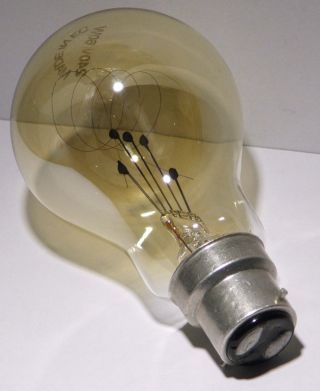
Victory Lighting 60W Carbon Heater Lamp - Detail of lamp cap
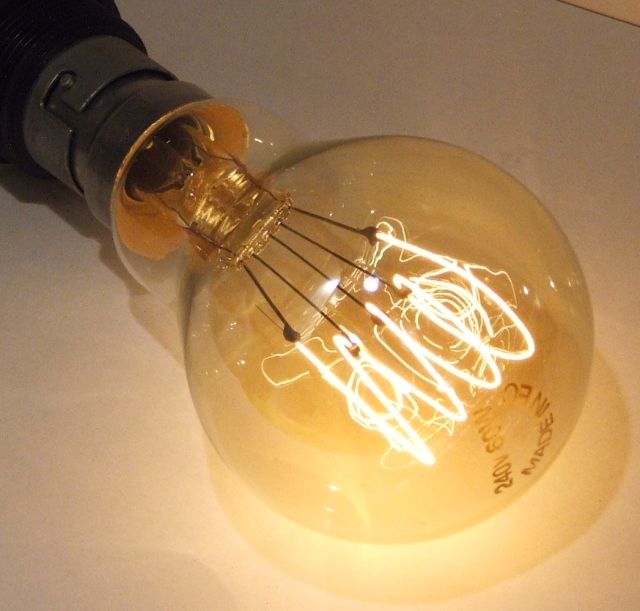
Victory Lighting 60W Carbon Heater Lamp - Lamp shown while alight
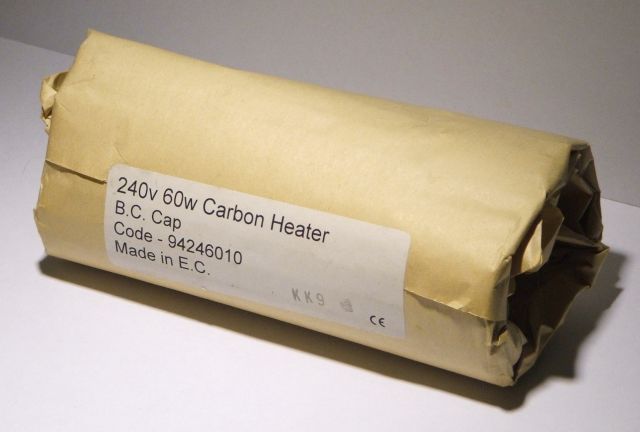
Victory Lighting 60W Carbon Heater Lamp - Lamp packaging
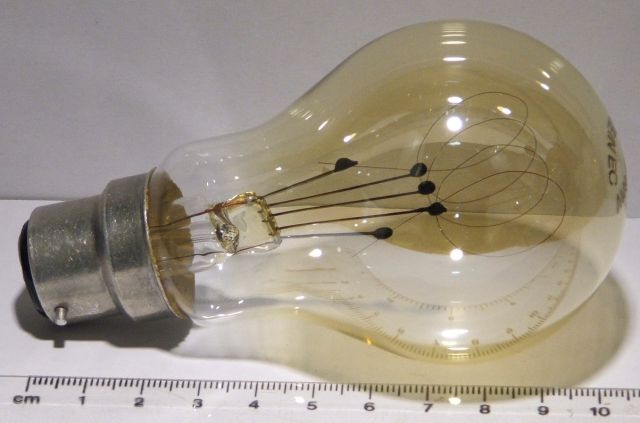
Victory Lighting 60W Carbon Heater Lamp - Showing lamp size
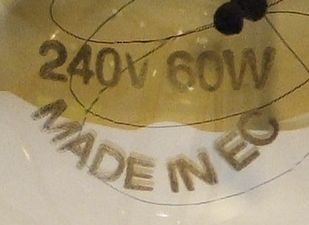
Victory Lighting 60W Carbon Heater Lamp - Detail of text printed on lamp
This page last updated:
17th June 2023: Changes to page format to improve readability on mobile devices. Also made some background code changes to improve search engine behaviour.